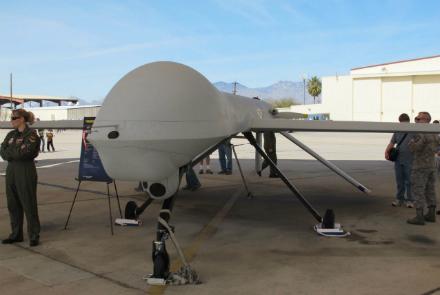Newly released U.S. Air Force figures indicate that Donald Trump's administration has ramped up the American air war in Afghanistan, dropping 1,634 bombs on terrorists so far this year.
The figures shows an increase of more than 65 percent from the 545 airstrikes launched during the same period in 2016, military data shows.
According to the U.S. Air Force figures, U.S. Central Command (CENTCOM) had dropped 1,634 munitions in Afghanistan as of June 30, marking a dramatic increase from the same period in 2015 (298) and the following year (545).
CENTCOM oversees U.S. military operations in Afghanistan and the Middle East.
The data shows that the number of munitions dropped in Afghanistan this year has already exceeded the total 947 and 1,337 during all of 2015 and 2016, respectively.
According to a report by the Washington Post, U.S. Navy Capt. Bill Salvin, a spokesman for the U.S.-led mission in Afghanistan, indicated that majority of the airstrikes launched this year have targeted the Taliban.
The report added that the U.S. military also attacked the Islamic State (ISIS/ISIL) also known as Daesh, but to a lesser extent.
By the time U.S. President Dolan Trump took office, the Taliban had gained control of more territory than during any other time since the U.S. military removed it from power in 2001.
Former U.S. President Barack Obama declared the U.S. combat mission over in Afghanistan at the end of 2014.
The U.S. Air Force figures show that the number of airstrikes decreased nearly every full year after 2014, which covers American airstrikes between 2012 and the end of June of this year.
The number of bombs launched so far this year is on track to come close to the 4,083 dropped in 2012, the figures show. American military pilots dropped more bombs in 2012 than during any other year covered by the U.S. Air Force data.
By the end of 2012, the Obama surge troops had returned home, and his withdrawal plans were underway.
U.S. president has granted the military broader authority to target jihadists in Afghanistan, allowing the Pentagon to set the number for the expected increase in the U.S. military's footprint in the war-ravaged country.
On Tuesday, Trump had lunch with a group of senior service members in a bid to come up with ideas on fighting the war in Afghanistan.
Trump said before the lunch that he wants "to find out why we've been there for 17 years, how it's going and what we should do in terms of additional ideas."
He said: "We have plenty of ideas from a lot of people, but I want to hear it from people on the ground."
This comes as Trump’s aides search for an improved strategy in tackling the war – a war that has been ongoing for 17 years.
It was widely expected that Trump’s new strategy would be unveiled by mid-July, however this has not happened.


